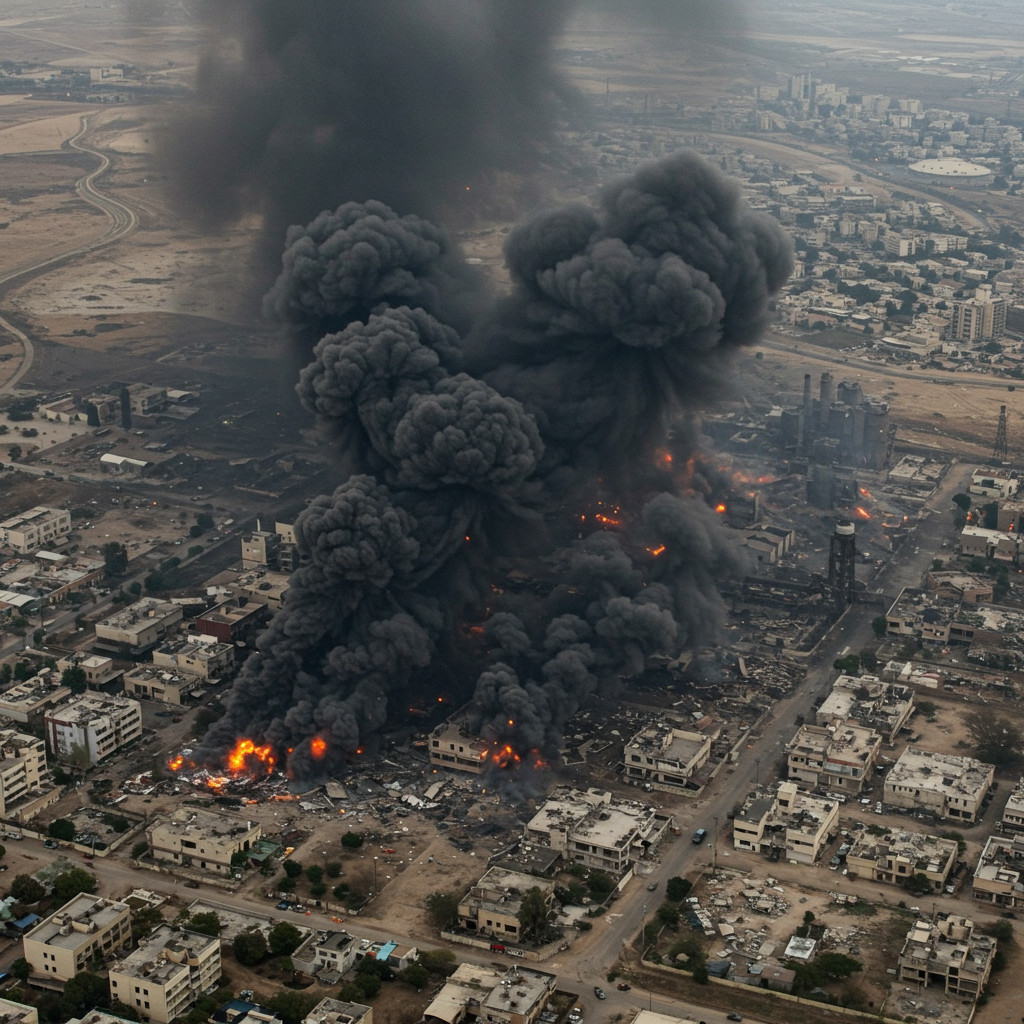Sunday, June 15, 2025, marked the third consecutive day of intense hostilities between Israel and Iran, as the conflict escalated sharply with continued direct aerial exchanges and mounting casualties. What began with Israeli strikes primarily targeting Iran’s nuclear and military infrastructure on Friday has rapidly evolved into a widespread confrontation involving attacks on military, energy, and even civilian areas in both countries.
Amidst the escalating fire, planned nuclear talks between the United States and Iran in Oman were called off, signaling the immediate impact of the violence on diplomatic efforts.
Major Strikes Reported on Both Sides
Both Israel and Iran reported launching significant barrages over the past 72 hours, including major exchanges overnight into Sunday.
Israeli Strikes on Iran: Israeli forces continued their aerial campaign, striking targets across Iran and issuing warnings via social media for Iranians to evacuate arms factories, suggesting a potential expansion of targets. Reported targets included the Iranian Defense Ministry, military bases, air defense systems, and sites associated with missile programs. Israel also reportedly targeted key personnel, with sources indicating successful strikes killing top commanders and nuclear scientists in what appeared to be “targeted assassinations,” including attacks on residential buildings housing military figures. A significant escalation involved strikes on critical energy infrastructure, including Tehran’s main gas depot and central oil refinery. Overnight Friday, Israeli jets reportedly struck around 80 targets in Tehran alone.
Iranian Strikes on Israel: Iran retaliated with waves of missile and drone attacks targeting multiple locations in Israel. While many incoming projectiles were intercepted by Israeli defenses, some successfully evaded systems and struck buildings. Notable targets included the port city of Haifa, where one strike on Sunday injured at least 15 people, and the neighboring town of Tamra, which saw fatalities overnight Saturday. The Tel Aviv area, including the city of Bat Yam and the Kirya military headquarters in central Tel Aviv, was also targeted, resulting in damage and casualties. Israeli figures indicate Iran launched over 270 missiles since Friday, with at least 22 impacting Israeli territory.
Casualties and Civilian Impact
The intense exchange of fire has resulted in significant casualties on both sides, highlighting the conflict’s deadly toll, including on civilians.
According to figures cited from the Iranian Health Ministry and human rights groups, casualties in Iran from Israeli strikes have reached into the hundreds killed and over a thousand wounded since the conflict began. Reports included dozens killed, including children, in a strike that caused a section of a residential building in Tehran to collapse.
In Israel, the death toll had risen to at least 13 people killed and 380 wounded since Friday night, with at least 10 deaths occurring during Iranian missile barrages overnight Saturday. The town of Bat Yam was reported as particularly hard hit, with multiple fatalities and extensive building damage. Airspace closures were also announced by Israel, impacting air travel.
Nuclear Facilities Targeted
A key focus of Israel’s initial offensive appears to be dismantling Iran’s nuclear program. Strikes targeted sites historically linked to nuclear activities, including the main enrichment facility at Natanz, the Fordo facility, and a nuclear research center in Isfahan.
Assessments from international atomic energy officials indicated that while the main underground facility at Natanz did not appear to suffer direct hits, the above-ground section was destroyed, and the underground site might have sustained damage due to power loss. At the Isfahan facility, four “critical buildings,” including the uranium conversion facility, were damaged, though no signs of increased radiation were detected. Israeli military officials assessed that repairs to the targeted nuclear sites could take “much more than a few weeks,” asserting that production at Isfahan was for military purposes. Concerns remain about Iran’s nuclear advancements, including enriching uranium up to 60% and building missile stockpiles, with some voices suggesting the window to prevent Iran from obtaining nuclear weapons is closing.
Diplomacy Falters Amidst Fire
The immediate impact on diplomacy was evident with the cancellation of planned nuclear talks between the U.S. and Iran in Oman scheduled for Sunday. Iran’s Foreign Minister stated that Tehran would be willing to explore a return to diplomacy if Israeli aggression ceases, but deemed talks “unjustifiable” while strikes continued. The minister also accused the United States of providing direct support for Israel’s attacks and being a “partner” that “must take responsibility.”
The United States affirmed its commitment to diplomacy despite the cancellation but has provided substantial military and intelligence support to Israel for defense. However, a U.S. official reportedly communicated opposition to an Israeli plan to kill Iran’s Supreme Leader, citing that Iran had not killed an American and the sensitive nature of targeting political leaders. While President Trump made conflicting public statements regarding potential direct U.S. involvement, he warned Tehran against targeting U.S. interests, threatening a response at “levels never seen before,” but also suggested a peace deal could be achieved “soon” and expressed openness to mediation.
Israeli leaders remained defiant amidst international calls for de-escalation. Prime Minister Benjamin Netanyahu reportedly dismissed these calls, stating Israel’s strikes so far were “nothing compared to what they will feel” soon. His defense minister warned that “Tehran will burn” if Iran continued attacks, and the Israeli Ambassador to the U.S. declined to rule out targeting Iran’s top leader.
The prospect of a diplomatic resolution appears distant as hostilities rage, though the conflict is expected to be a high-priority item during the upcoming G7 summit. This latest escalation marks a new, more direct phase in the long-standing tension between the two regional powers, building upon years of proxy conflicts, covert actions, and increasingly open exchanges of fire that accelerated significantly following events in late 2023 and early 2024.



